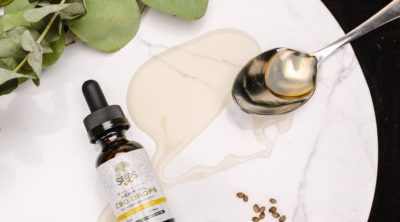
Butterbur has been used by the native Americans for thousands of years for the treatment of migraines, sinus infection, allergies, etc. The following article provides information about the use of butterbur to get rid of the symptoms of migraine, and its side effects.
The scientific name of butterbur herb is Petasites hybridus. It is also known as European pestroot or sweet coltsfoot. This herb has been used by native Americans for the treatment of headaches, asthma, allergies, pain, fever, spasms, etc. It contains sesquiterpene such as petasin and isopetasin, which are helpful in treating digestive disorders, skin diseases, pain, headache, migraine, cough, urinary and genital tract spasms, ulcers, arthritis, edema, etc. The herb exhibits anti-spasmodic and anti-inflammatory properties, which are responsible for its high medicinal value.
Effects of Butterbur on the Symptoms of Migraine
Butterbur is a low-lying, perennial herb. Various species of this herb are known for their exceptional medicinal properties. Leaves, flowers, stems, and root stocks of this herb are used to treat various conditions. Petasin, which is a chemical obtained from this herb, is mainly responsible for its anti-inflammatory and anti-allergy properties. The anti-inflammatory property is especially useful in lowering the symptoms of migraine. Standardized capsules of this herb (25 milligrams) are also available in the market. Petasites extract is also available for medicinal use, however, the concentration of the medicinal elements may vary from brand to brand.
Other than the aforementioned Petasites hybridus, Tussilago petasltes and P. frigidus (also known as western coltsfoot) are also used to treat various medical conditions. However, one should consult his/her physician for the correct dosage of this herb, as the active ingredients may vary from batch to batch. The herb also contains certain harmful substances, and there is no standardization regarding the purity of its extract. Hence, excessive consumption of this herb should be avoided.
Side Effects
While taking this herb for migraines, one should inform the doctor about the medications that he/she is taking currently, because it may interfere with those medications and cause certain side effects. Those who are taking anticholinergics such as atropine, should consult their physician before opting for this herb. People with decreased intestinal or bladder motility, should not use this herb for migraines, as it may worsen the situation. According to some experts, the use of this herb might lead to liver dysfunction or even cancer, because it contains Pyrrolizidine Alkaloids (PAs). Since scientific studies do not support the benefits of butterbur, pregnant women and breastfeeding mothers should avoid it.
Commonly observed side effects of this herb are:
- Headache
- Nausea, vomiting
- Diarrhea
- Constipation
- Abdominal pain
- Belching
Serious side effects include jaundice, pain in the upper right quadrant of the abdomen, and abdominal swelling. Since this herb is related to ragweed, people allergic to ragweed might also experience an allergic reaction to butterbur. Some people may suffer from skin rashes, itching, swelling of the mouth, lips, or throat, wheezing, and shortness of breath. Hence, one needs to take proper precautions while consuming this herb.
In Germany, this herb has been used to treat migraine for more than 30 years. Normally, taking 75 mg twice a day with food, helps reduce the number and duration of migraine attacks. However, the difference is visible after consuming it for at least one month. Also, it is always advisable to take pills which are labeled “PA-free”.
Though this herb has been used to treat various diseases and disorders, there’s a lack of sufficient evidence to prove its safety and effectiveness. Hence, one should take necessary precautions while taking it for migraines.
Disclaimer: This article is for informative purposes only and does not in any way attempt to replace the advice offered by an expert on the subject.


